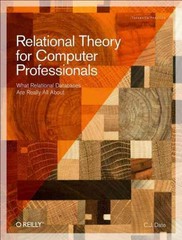Answered step by step
Verified Expert Solution
Question
1 Approved Answer
I need the implementation code for this: // PROVIDED BY: ________________ (your name and email address) // FILE: sequence3.h // CLASS PROVIDED: sequence (a container
I need the implementation code for this:
// PROVIDED BY: ________________ (your name and email address) // FILE: sequence3.h // CLASS PROVIDED: sequence (a container class for a sequence of items, // where each sequence may have a designated item called the current item) // // TYPEDEF for the sequence class: // typedef ____ value_type // sequence::value_type is the data type of the items in the sequence. It may be any of // the C++ built-in types (int, char, etc.), or a class with a default // constructor, an assignment operator, and a copy constructor. // // CONSTRUCTOR for the sequence class: // sequence( ) // Postcondition: The sequence has been initialized as an empty sequence. // // MODIFICATION MEMBER FUNCTIONS for the sequence class: // void start( ) // Postcondition: The first item on the sequence becomes the current item // (but if the sequence is empty, then there is no current item). // // void advance( ) // Precondition: is_item returns true. // Postcondition: If the current item was already the last item on the // sequence, then there is no longer any current item. Otherwise, the new // current item is the item immediately after the original current item. // // void insert(const value_type& entry) // Postcondition: A new copy of entry has been inserted in the sequence before // the current item. If there was no current item, then the new entry has // been inserted at the front of the sequence. In either case, the newly // inserted item is now the current item of the sequence. // // void attach(const value_type& entry) // Postcondition: A new copy of entry has been inserted in the sequence after // the current item. If there was no current item, then the new entry has // been attached to the end of the sequence. In either case, the newly // inserted item is now the current item of the sequence. // // void remove_current( ) // Precondition: is_item returns true. // Postcondition: The current item has been removed from the sequence, and the // item after this (if there is one) is now the new current item. // // CONSTANT MEMBER FUNCTIONS for the sequence class: // size_t size( ) const // Postcondition: The return value is the number of items on the sequence. // // bool is_item( ) const // Postcondition: A true return value indicates that there is a valid // "current" item that may be retrieved by activating the current // member function (listed below). A false return value indicates that // there is no valid current item. // // value_type current( ) const // Precondition: is_item( ) returns true. // Postcondition: The item returned is the current item on the sequence. // // VALUE SEMANTICS for the sequence class: // Assignments and the copy constructor may be used with sequence objects. // // DYNAMIC MEMORY USAGE by the sequence: // If there is insufficient dynamic memory, then the following functions call // new_handler: The constructors, insert, attach, and the // assignment operator. #ifndef MAIN_SAVITCH_SEQUENCE3_H #define MAIN_SAVITCH_SEQUENCE3_H #include// Provides size_t and NULL #include "node1.h" // Provides linked list toolkit namespace main_savitch_5 { class sequence { public: // TYPEDEF typedef size_t size_type; //typedef std::size_t size_type; typedef node::value_type value_type; // CONSTRUCTORS and DESTRUCTOR sequence( ); sequence(const sequence& source); ~sequence( ); // MODIFICATION MEMBER FUNCTIONS void start( ); void advance( ); void insert(const value_type& entry); void attach(const value_type& entry); void remove_current( ); void operator =(const sequence& source); // CONSTANT MEMBER FUNCTIONS size_t size( ) const; bool is_item( ) const; value_type current( ) const; private: -- Declare your private members here. I suggest that -- you have the five private member variables that are -- described in Section 5.4 (page 259) of the textbook. }; } #endif
Step by Step Solution
There are 3 Steps involved in it
Step: 1

Get Instant Access to Expert-Tailored Solutions
See step-by-step solutions with expert insights and AI powered tools for academic success
Step: 2

Step: 3

Ace Your Homework with AI
Get the answers you need in no time with our AI-driven, step-by-step assistance
Get Started


